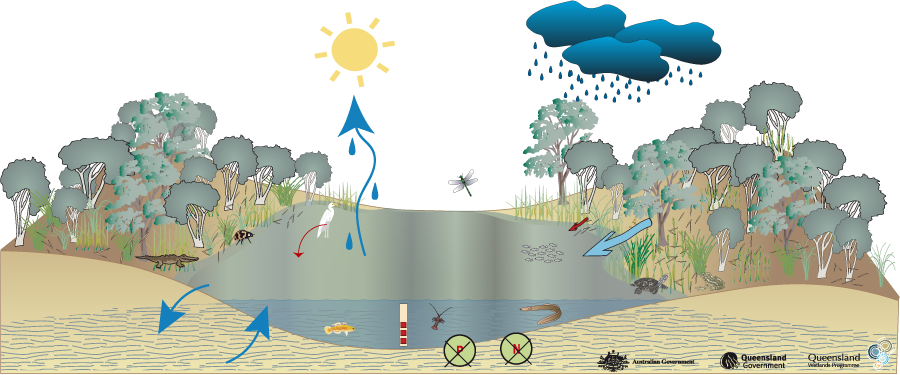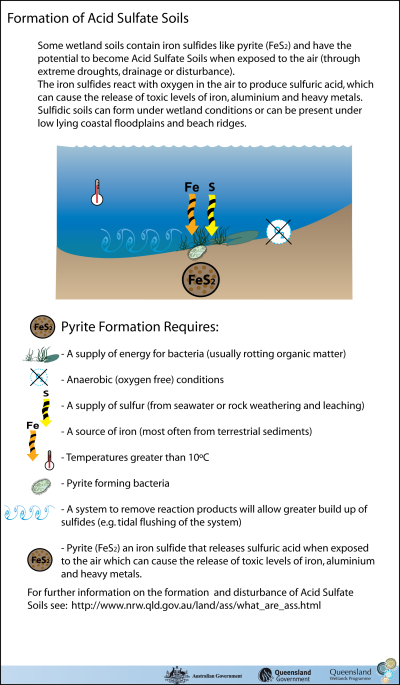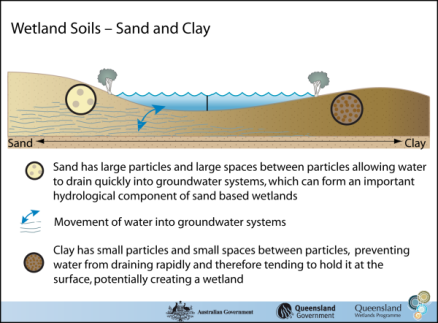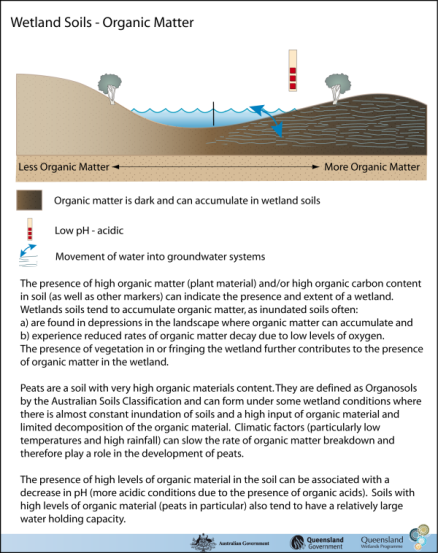|
|
Coastal and subcoastal non-floodplain sand lake—WindowCoastal and subcoastal non-floodplain sand lake—Window – Geomorphology Click on elements of the model or select from the tabs below
The origin, evolution and processes involved in the formation of coastal dune lakes are diverse. Lakes may form in sand hollows created by wind (known as deflation hollows); when dunes advance and form a barrier across hollows and valleys; or between parallel dunes (that is, in dune swales). These lakes are dependent on local catchment run-off (rainwater) and/or groundwater. They are generally permanent in nature but may be semi-permanent or temporary, depending on their location and climatic conditions. The water level of coastal dune lakes may change quite markedly between seasons. Water table window lakes occur between dunes and intercept the regional groundwater table. They effectively form a window to the aquifer below.
Last updated: 22 March 2013 This page should be cited as: Department of Environment, Science and Innovation, Queensland (2013) Coastal and subcoastal non-floodplain sand lake—Window – Geomorphology, WetlandInfo website, accessed 8 May 2025. Available at: https://wetlandinfo.des.qld.gov.au/wetlands/ecology/aquatic-ecosystems-natural/lacustrine/non-floodplain-sand-lake/geomorphology.html |

 — Department of the Environment, Tourism, Science and Innovation
— Department of the Environment, Tourism, Science and Innovation




